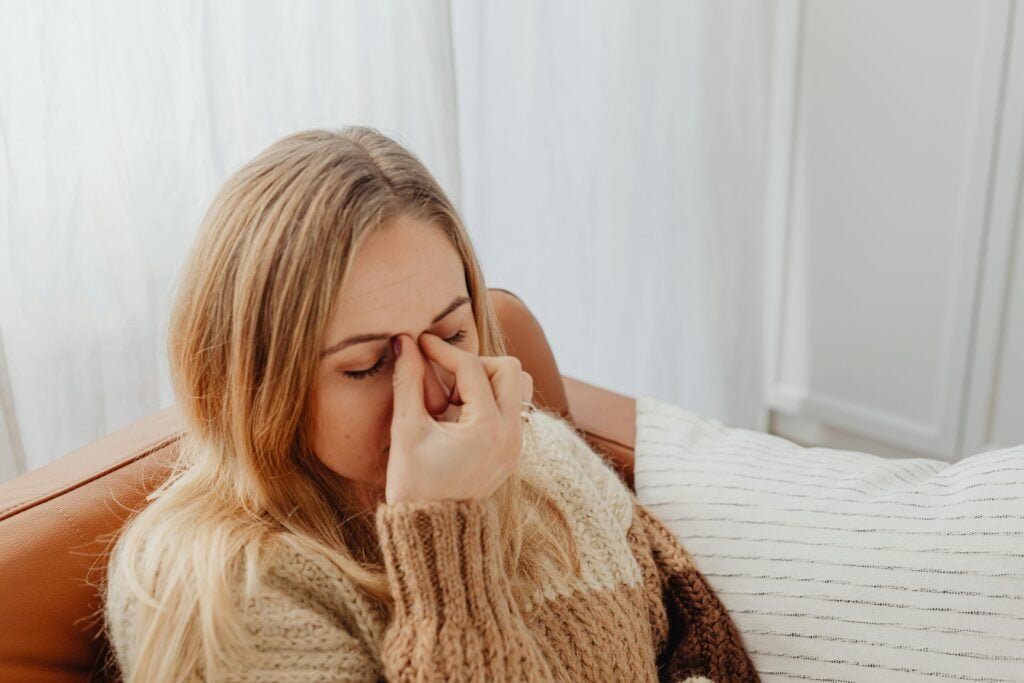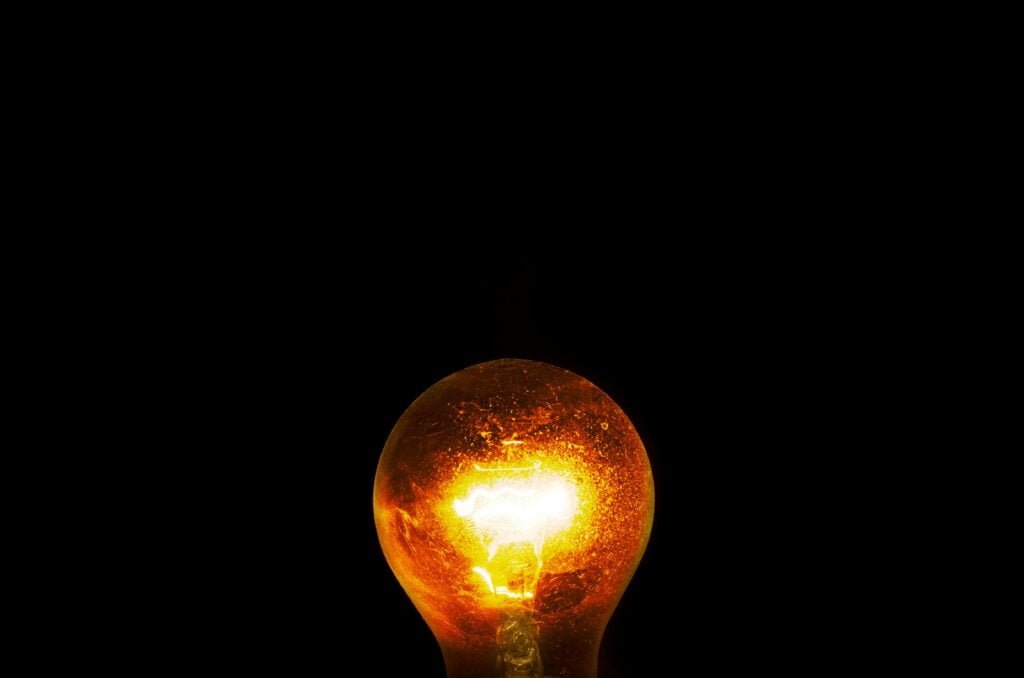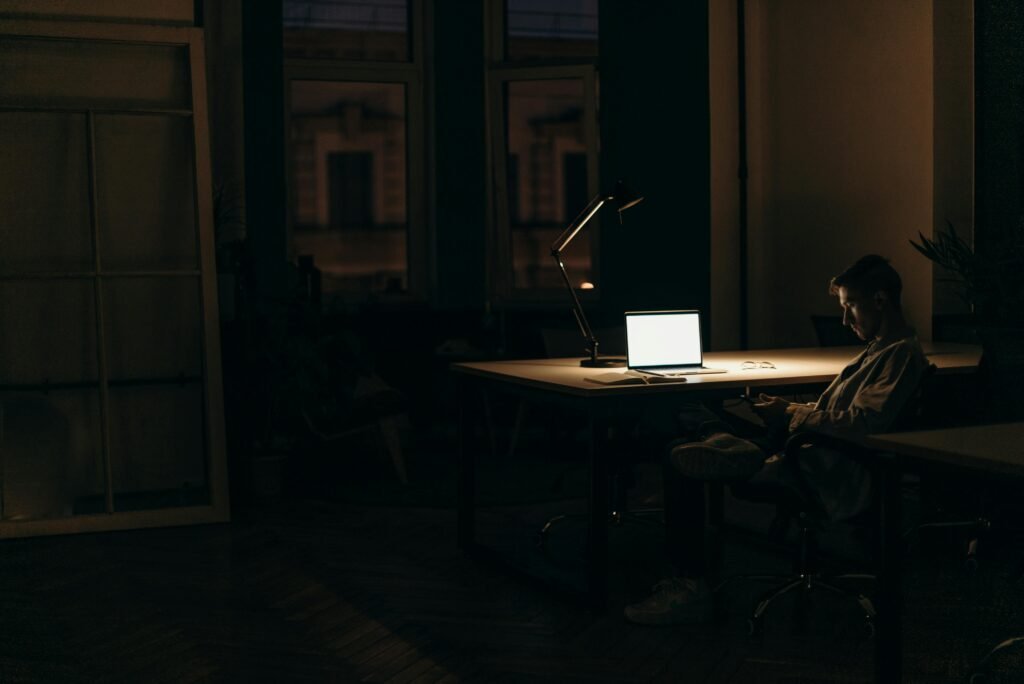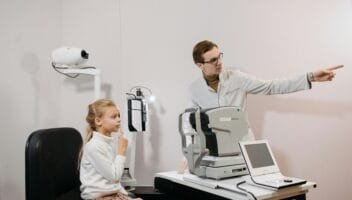As our world becomes increasingly digital and virtual, more and more people are struggling with eye strain.
Today, we are dependent on our screens to manage every aspect of our lives. Most of our work happens on our computers. When we need a break, we scroll through social media on our phones. If we need to pay a bill, we do it with a click on the phone. When we want to spend time with friends, we go out to a movie. Even when we are walking on a treadmill, we will be looking at something on the television. So, most of our activities are also happening indoors. We are spending a lot of our time indoors, under artificial lighting.
Our screens are so versatile but we have only two eyes. As we flutter between big and large screens to read and to call loved ones, our eyes are constantly engaged. They have to work extra hard to keep up with our demands to focus and perform. Naturally, we are getting more eye strain than ever.
It is easy to blame screen use and say we can’t escape the screens. If we do this, we are ignoring an equally important cause behind eye strain – lighting. It is an equally important factor that can relieve or escalate your eye strain issues.
Understanding this concern, we are here to guide you to find optimal lighting that will protect you from eye strain.
Table of Contents
Understanding Eye Strain

Eye strain (asthenopia) is a common condition for most of us thanks to our heavily digitalized lives. But, eye strain in itself is not only caused by screen usage.
Eye strain happens when your eyes become fatigued because of intense use for long periods of time. Your eyes can experience strain when you spend a long time focusing on your eyes. Some examples of such activities would be reading, embroidery, or driving. But we spend a lot of time looking at our phones, computers, and televisions these days. For work, leisure, accessing a service or talking to a loved one, we are dependent on our digital devices. So, digital screens are a major cause of eye strain for almost all of us.
Eye strain will present as mild discomfort or a feeling of tiredness in the eyes during the early stages. But, if you do not address it, this strain can escalate into serious eye health issues. A few common consequences of eye strain are – blurring of vision, headaches, stress, and poor concentration. Over time, your ability to do tasks that require visual focus will be affected.
A break from strenuous activity or a quick rest usually relieves eye strain. Especially, taking a break from the screens or taking a power nap would ease the disocomfort. But if you do not take adequate rest and breaks, the eye strain will build up. This strain can lead to chronic issues and affect the quality of your life.
When we feel eye strain, most of us blame it on the screens or that sleepless night. But, one factor that is often overlooked is the lighting and its effect on the eyes.
The Relationship Between Lighting and Eye Strain
The lighting at your home and your work can either relieve your eye strain or make it worse. Poor lighting will force your eyes to work harder and cause strain. Similarly, harsh lighting will give you focus troubles and cause eye fatigue. So, reading in the dim light and working in front of the brightly lit computer are both harmful in the long run.
Good lighting supports your vision by reducing the need to focus. Proper lighting can ensure the balance between what you are looking at and the background. So it is easier for your eyes to focus on the task at hand. So, if you adjust your light, you can protect yourself from eye strain after a long day of work or study.
The Science Behind Eye Strain

Our eyes are like a complex and sensitive camera. Light plays a key role in the quality of images we see and the quality of our eyes. When the lighting is optimal, your eyes do not have to work extra hard to focus and get eye strain. Here are some factors that will help you understand the relationship between lighting and your eye health:
1. Excessive Brightness and Glare
If the lighting at your home or work is too bright, it will overwhelm your eyes. The intensity of the light creates a harsh contrast and makes it harder for your eyes to focus on the objects. This glare could be from natural sunlight or your computer screen. Your eyes have to adjust their focus to deal with the overwhelming glare constantly. Eventually your eyes will become tired and result in discomfort or headaches.
2. Insufficient Light
Just as too much light causes eye strain, too little light can also result in eye fatigue. If you are trying to read, write, or sew in a dim room, your eyes will have to strain to focus. When there is insufficient light, your pupils have to dilate to catch more light. But they can dilate only so much. If you are focusing intensely for longer periods under dim lighting, you will experience blurry vision and eye fatigue.
3. Blue Light
Your electronic and digital devices emit a type of light known as the blue light. Your smartphone, tablets, laptops, adn computers all emit this blue light. As this type of light has a shorter wavelength, it scatters more easily. Your eyes have to focus extra hard to manage this scattering effect. So, working on or looking at screens for extended periods will cause eye strain. The blue light will also suppress the melatonin cycle and disrupt your sleep. Tiredness caused by poor sleep can cause further eye strain.
The Role of Lighting in Eye Comfort and Eye Strain
Lighting is a key factor that determines how well your eyes are able to see and how comfortable they are. This does not mean you should have a lot of light, always. That also strains your eyes. The optimal lighting situation is the one that is best suited for the task you are doing, depending on the time of the day. Personal preference also plays a role in deciding the best lighting.
For instance, let us look at reading during day time. The bright and focused light from the window would be ideal, but harsh sunlight would cause eye strain. What if you are reading at night? A dimmer overhead light for general illumination and a focused lamp for reading would work best. Similarly if you are working at a computer, natural light is good. But, strong sunlight falling on your screen can cause eye strain.
There are 4 key aspects of lighting, i.e., contrast, brightness, color temperature, and placement. When you understand how each of these affects your eye comfort, you can know what kind of lighting prevents eye strain.

1. Brightness and Eye Strain
When the light is too bright and intense, whether natural or artificial, it causes eye strain. Excessively bright light can cause glare when it reflects off your screens. Intense light can cause glare when it reflects off other surfaces, such as tables and walls. This glare forces your eyes to focus harder and results in eye fatigue.
Lower-wattage bulbs are a good solution if bright light is causing glare in your home. But, you do need brighter light for some tasks, right? For such a need, you can install dimmers. These dimmers will help you adjust the intensity and brightness of the light depending on your task. You can have brighter light during the day for work or reading. Then, use dimmer light in the evenings and nights to relax your eyes.
2. Sufficient Contrast to Prevent Eye Strain
Contrast in lighting refers to the difference in brightness between the object you are looking at and the surroundings. If there is a good contrast, you can focus easily on the details. Whereas if the contrast is poor, you will have to strain your eyes to focus. For instance, let us think about looking at a worksheet on your laptop. Darker letters on a lighter background or vice versa make reading easier because of the contrast.
Contrast is also about balance. An overly bright screen in a dark room forces your eyes to adjust constantly to the different lighting. So after some time, your eyes feel fatigue and discomfort. So, the background should be well-lit but not too bright. The light sources should not create harsh shadows or overly dark areas in the background. Dimmers can once again adjust the lighting levels to create a balanced environment.
3. Color Temperature and its Effect on Eye Strain
Color temperature refers to the color of the light emitted by the bulbs. This color temperature is measured in Kelvins(K), and it can affect your eye comfort. Warm light (2700K to 3500K) is suited for the evenings as it is soft and easy on the eyes. It will help your eyes relax and promote sleep. At the same time, cool light (94000K to 5000K) is more stimulating and is suited for activities during the day. Cool light can also affect melatonin production and disrupt your sleep.
In the cool light spectrum, there is a specific one known as blue light. Our screens emit it. If you spend a long time looking at your electronic devices, it will suppress melatonin and strain your eyes. You can use blue light filters on your laptop or computer screens to reduce the impact. Alternatively, you can try blue light-blocking glasses to minimize eye strain during screen use.
4. Eye Strain from Lighting Placement
Where you place your light is equally important as the type adn intensity of your lighting. If the light source is direct or reflects off a surface to create glare, it will strain your eyes. Lighting sources such as lamps should not be in your direct line of sight. The overhead lights should not create harsh shadows or throw light directly into your eyes.
Task lighting is an excellent solution for the dilemmas of eye strain. This lighting is designed for performing specific activities such as reading, cooking, or working on your laptop. Task lighting creates optimal contrast between your work area and the surroundings. So your eyes do not have to strain and adjust constantly. Another option is designing a layered lighting layout for your home. You can use a combination of task lighting and accent lighting to highlight work areas. Then, ambient lighting can help you light up the overall or general area of the room.
5. Natural Light and Eye Strain Management
Natural light is good not only for your eyes but also for your overall health. Sunlight will regulate your circadian rhythm and protect you against eye strain. If you arrange your workspace near a window, you can enjoy the soft illumination of natural light. Natural light also relieves your eyes from the need to adjust constantly.
But, sunlight can be too bright also. If it falls directly on your screen, it can cause glare and cause eye strain. Curtains, shades, and blinds will help you diffuse the light and maintain the right contrast. Also, the light should come from your side rather than from in front of you or behind you.
Lighting Tips for Different Environments to Prevent Eye Strain

If you design tailored lighting to suit the environment and tasks, it will ensure your eye comfort. Here is how adaptive lighting can help you reduce eye strain –
1. Home Office
If you are working from home, make the most of the natural light available to you. Place your desk by the side of the window or parallel to the window. Adjust the intensity of sunlight with sheer curtains and sheets. Use a task lamp with a flexible arm for working at night. You can not only adjust the brightness but also where the light is falling with the task lights. Don’t forget to add blue light filters to your computer.
2. Bedroom
Your bedroom is meant for relaxation and sleep. If you use warm tones or yellow-hued lighting, you can achieve this goal easily. The soft amber glow of warm lighting eases eye strain and does not disrupt your sleep cycles. Bright and cool-toned lights should be avoided in the bedroom. If you want to read in bed or squeeze in some last-minute work, you can use task lighting. An adjustable bedside lamp will help you get the work done without straining your eyes too much.
3. Living Room
Living rooms are generally multi-functional spaces. You will work, read, relax, watch TV, spend time with family, and entertain the guests here. So, a layered lighting set-up works best in such an area. You should combine ceiling lights with floor lamps and table lamps to ensure an even distribution of light. Task lighting options ensure good contrast and relieve eye strain.
Dimmers are very useful for ensuring comfortable lighting in your living room. Depending on the activity you are doing, you can adjust the intensity of the light. So, you can transition between dark movie nights and bright reading time with ease.
4. Kitchen
Lighting under the kitchen cabinets provides the right illumination for the kitchen countertops. Such lighting will also avoid shadows and prevent eye strain. Focused lighting is also essential to keep you safe as you chop vegetables and operate kitchen appliances. Proper lighting is also crucial for ensuring food hygiene. Lighting will also help you read the recipes comfortably, whether from a book or on your phone.
The lights in the kitchen should be clear, bright and white, providing maximum clarity. A warmer temperature lighting will prevent accidents along with relieving eye strain. You should consider LED bulbs, which offer this type of warm adn bright lighting without increasing heat in the kitchen.
5. Additional Considerations
Along with optimal lighting, a few other eye care habits will protect you from eye strain. These habits are crucial because our increased digital screen usage puts us at a higher risk of eye strain.
Getting regular eye checkups helps you catch any eye health issues early. You can immediately adjust the lighting to address eye strain issues right at the beginning. If you are working on your computer or phone for an extended time, breaks are a must. Regular breaks will save you from digital eye strain. A nutritious diet, particularly eating foods rich in Vitamins, omega-3 fatty acids, and antioxidants, will protect your overall eye health.
Conclusion
Your lighting is a key factor in how comfortable your workspace and home are for your eyes. If the lighting is not optimal, you are at risk of eye strain, headaches, and blurry vision. Strategic lighting helps you work comfortably and maintain a healthy vision.
So, don’t take lighting ‘lightly’
Strategize the brightness and contrast in your environment for the best vision experience.



